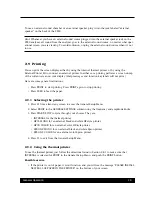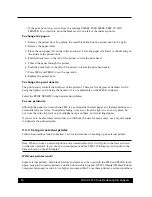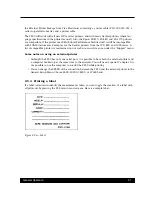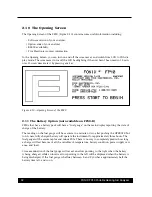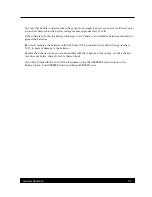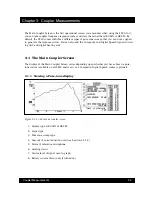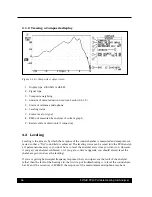
General Operation
21
Note: If you toggle a function with SETUP F2 or SETUP F3, that function will remain in that set-
ting until you explicitly change it back or turn off the analyzer. For example, if you were to: 1)
Choose MULTICURVE for SETUP F2, 2) Turn MULTICURVE ON using the F2 button in the General
Setup Menu, 3) Choose CIC for SETUP F2, then Multi-Curve would remain ON in the Main Coupler
Screen even though it would no longer be the selection for SETUP F2.
F7 DEFINITION:
This selection is in a different section in the General Setup Menu than the
previously described selections. This is because MAIN F2-F4 and SETUP F2-F3 all affect the Main
Coupler Screen. F7 DEFINITION, located in the PROBE SETTINGS section of the General Setup
Menu, affects the F7 key in the Main Probe Screen. A setting of SOURC SEL will make F7 in the
Main Probe Screen toggle between the different source types available on your FP40. This is handy
when you’re doing a real-ear test, and you need to be able to quickly switch your source type. For
example, you may want to switch between a composite signal and a digital speech signal. A setting
of SNGL TONE allows you to present a single pure-tone signal to the aid (instead of running an
entire pure-tone sweep).
2.4 Source Types
There are two main types of sources available on the FP40 analyzer: pure-tone and composite.
Three kinds of pure-tone sweeps come standard with the FP40: normal, fast, and short. When you
purchase the Composite Option, you will receive the Composite, Digital Speech ANSI, and Digital
Speech ICRA signals.
The type of source you should choose for a particular test or type of hearing aid depends upon the
signals you have available and the situation. Here is a description of each of the source types and
when you would want to use them.
2.4.1 Understanding Pure-tone signals
A pure-tone sweep is a test involving a progression of pure tone signals presented at a specified
level. When the sweep is complete, the aid’s frequency response at those frequencies is displayed on
the graph (or data column).
There are three types of pure-tone signals: normal, fast, and short.
• NORMAL: Contains 43 different frequencies and only does one sweep before ending the test.
• FAST: Contains 16 different frequencies and continually sweeps through them until you stop
the test. The fast sweep is meant to be used as a real-time continuous signal convenient for
use while adjusting hearing aids. It is an alternative to the composite signal.
• SHORT: Contains 10 different frequencies and only does one sweep. It is primarily used for
testing loud levels in real-ear measurements.























